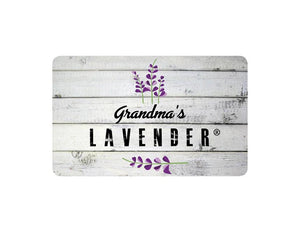Chemical UV Filters

Chemical UV Filters are active ingredients in sunscreen. They function as mineral or chemical UV filters that keep harmful rays from the skin. Most common sunscreen brands contain chemical filters. The product typically contains between 2-6 of the following active ingredients: Oxybenzone, Avobenzone, Octisalate, Octocrylene, Homosalate, and Octinoxate. The most common two being Oxybenzone and Octinoxate.
Oxybenzone, or Benzonepheone-3, primary function is to absorb UV light. Sunblock is exactly what the name implies, to block the sun. The problem with Oxybenzone is it not only absorbs UV rays, but research suggests that it is absorbed into the skin. It is then in the body for an undetermined amount of time. It is used in nail polish, fragrances, hairspray, and cosmetics as a photostabilizer.
Octinoxate filters UVB rays. It is formed by combining Methoxycinnamic acid and 2-ethlhexanol compounds, which on their own are not harmful. However, when they are mixed together they form a clear liquid. It absorbs quickly into the skin because it does not dissolve in water, but does in oil. When it is dissolved by oil it becomes a fat seeking substance in the body.
*** Other than sunscreen you can find both of these chemical uv filters in hair coloring products, lipstick, nail polish, and skin creams.***
The concerns these UV filters raise is it has been linked to hormone disruption.
Endocrine disruptors chemicals mimic hormones, can cause endometriosis, and can pose a risk to the reproductive system. It has been increasingly linked to early puberty in girls, low sperm count and infertility in males, and an increase hormone related cancer in both men and women.
When the FDA began to investigate sunscreen safety, It grandfathered in ingredients from the late 70’s without reviewing their potential hazards. In February of 2019, the FDA released its final findings for sunscreen. It contained that 12 out of the 16 sunscreen filters allowed for use in the United States insufficient health and safe data to be recognized as safe and effective, or the GRASE standard. The GRASE standard was given to just 2 of the active ingredients, zinc oxide and titanium dioxide.
The report goes on to say that the agency needs further data to determine the GRASE status of Oxybenzone. They claim that the available literature indicates Oxybenzone absorbs into the skin to a “greater extent than previously understood and can lead to significant systematic exposure. It is an increased concern because of the questions raised regarding the endocrine activity.”
Despite the studies done, Oxybenzone and Octinoxate both remain FDA approved and are still used widely in many products. The best thing you can do is avoid them.
DEA & TEA
DEA & TEA are prime examples of ethanolamines, which are a chemical group built of amino acids and alcohols. They are present in many consumer products ranging from cosmetic and personal products to cleaning products.
DEA is an emulsifier in shampoo, detergents, and cleaners. TEA is used as fragrance, ph adjuster, and emulsifying agent.
Depending on what products ethanolamines are put in, they break down with other preservatives and form nitrosamines. Nitrosamines are a class of more than a dozen different chemicals, which the International Agency for Research on Cancer lists individually as possible and known carcinogens.
Studies that have bee done show that 52 to 68% of DEA in hair dyes, body lotions, and shampoos remain on the upper layer of the skin after exposure. Research has also linked DEA and male infertility. DEA alters sperm structure causing abnormalities that affect the sperms ability to swim and ultimately fertilize the egg. It also suggests that memory function and brain development in the womb could be permanently affected by DEA exposure. DEa has also been found to accumulate in the liver and kidneys, which causes organ toxicity and possibly leads to neurotoxic efforts such as tremors.
If you want to avoid DEA and TEA look for this on the ingredient label: Triethanolamine, diethanolamine, DEA, TEA, cocamide DEA, cocamide MEA, DEA-cetyl phosphate, DEA oleth-3 phosphate, lauramide DEA, linoleamide MEA, myristamide DEA, oleamide DEA, stearamide MEA, TEA-lauryl sulfate

